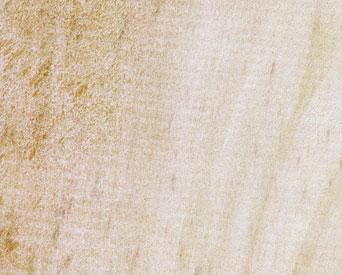Coigue (Nothofagus dombeyi), a member of the southern beech family, is sometimes marketed as Chilean beech. The wood appears similar to our native and European beech, except for the absence of the ray fleck. It has a bit more pink or reddish coloration than North American beech. A nearly identical species is called rauli (Nothofagus procera). Note that the genus name Nothofagus means “false beech.”
These two species, coigue and rauli, grow mainly in Chile and Argentina. The trees are often 130 feet tall and three feet or larger in diameter. Although they are a hardwood tree (that is, they have leaves and not needles), this tree is an evergreen. The first branch is often more than 50 feet above the ground, meaning that the harvested tree produces large volumes of clear lumber. In the forests, the tree grows rapidly and in dense, single-species stands.
Due to its abundance and favorable growth and appearance, we expect to see more of this lumber imported into North America. However, on the negative side, much of the supply in Argentina is in national parks, so harvesting is limited.
The lumber from these two species appears similar to cherry and therefore is being sold as a cherry substitute, at considerably lower prices than cherry. The wood is easy to work and quite stable when the moisture changes. This wood is certainly an all-purpose type of wood and will find widespread uses in furniture and cabinets.
Processing suggestions and characteristics
Density. The wood is almost always brought into the U.S. already kiln dried, although it may not be at the 7.0 percent MC level we prefer. It weighs about 31 pounds per cubic foot, which means that a ¾ inch thick board foot will weigh about 2 pounds. There is a 10 percent natural variation in density from the lightest weight to the heavier pieces.
Drying. Drying is very difficult...slow with a lot of warping and collapse. The collapse must be removed or recovered by using a steaming treatment at the end of drying. If not done, then if the wood is exposed to wetting or high humidity in manufacturing or afterwards, it will swell erratically; it may swell 5 percent or more at this first wetting exposure. Shrinkage in drying, except for collapse is typical for a medium density hardwood...about 5.3 percent across the width of a flatsawn piece of lumber.
Gluing and Machining. This wood glues very well with no extra care required. This wood also machines well, as might be expected, given its density. As always, the best machining occurs when knives are sharp.
Stability. Coigue is fairly stable, requiring a 4-1/2 percent MC change in the tangential direction (parallel to the rings) for a 1 percent size change. It requires a 7 percent MC change for a 1 percent size change in the radial direction (perpendicular to the rings). These numbers are very close to cherry’s stability numbers. However, note the high swelling if collapse is not relieved within the kiln drying cycle.
Strength. The ultimate bending strength (MOE) is 14,900 psi. The elasticity is 2.26 million psi. The hardness is 1160 pounds. Coigue is a bit stronger, stiffer, and harder than cherry. (The values reported here for coigue are for lower density material; some increase can be expected as the density of the wood increases.) For comparison, cherry is 12,300 psi, 1.49 psi and 950 pounds; western alder, another cherry look-alike is 9800 psi, 1.38 million psi, and 590 pounds.
Fasteners develop good holding power, but holes near the ends of a piece should probably be predrilled to avoid splitting, especially if the moisture is a bit on the low side.
Color and Grain. The grain of this species is considered to be fine; annual rings are not conspicuous. The color is pinkish brown. (I am not sure how this color will change with time and exposure to light --versus cherry, which darkens considerably). Some work with the finishing system would be needed to obtain the perfect cherry appearance. The wood has a high luster.







Have something to say? Share your thoughts with us in the comments below.